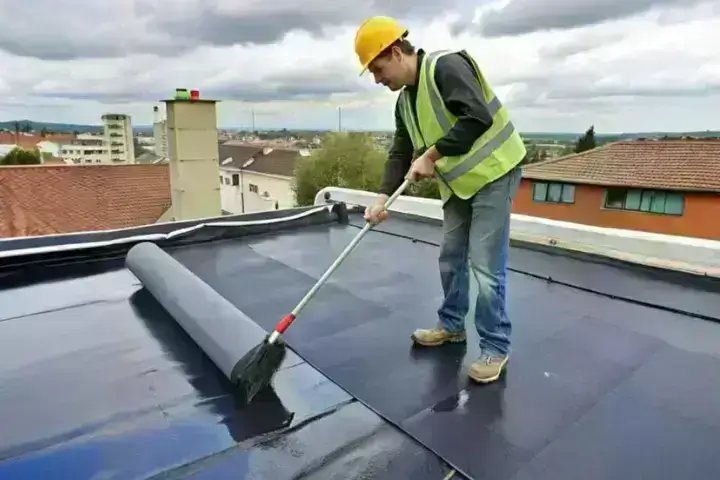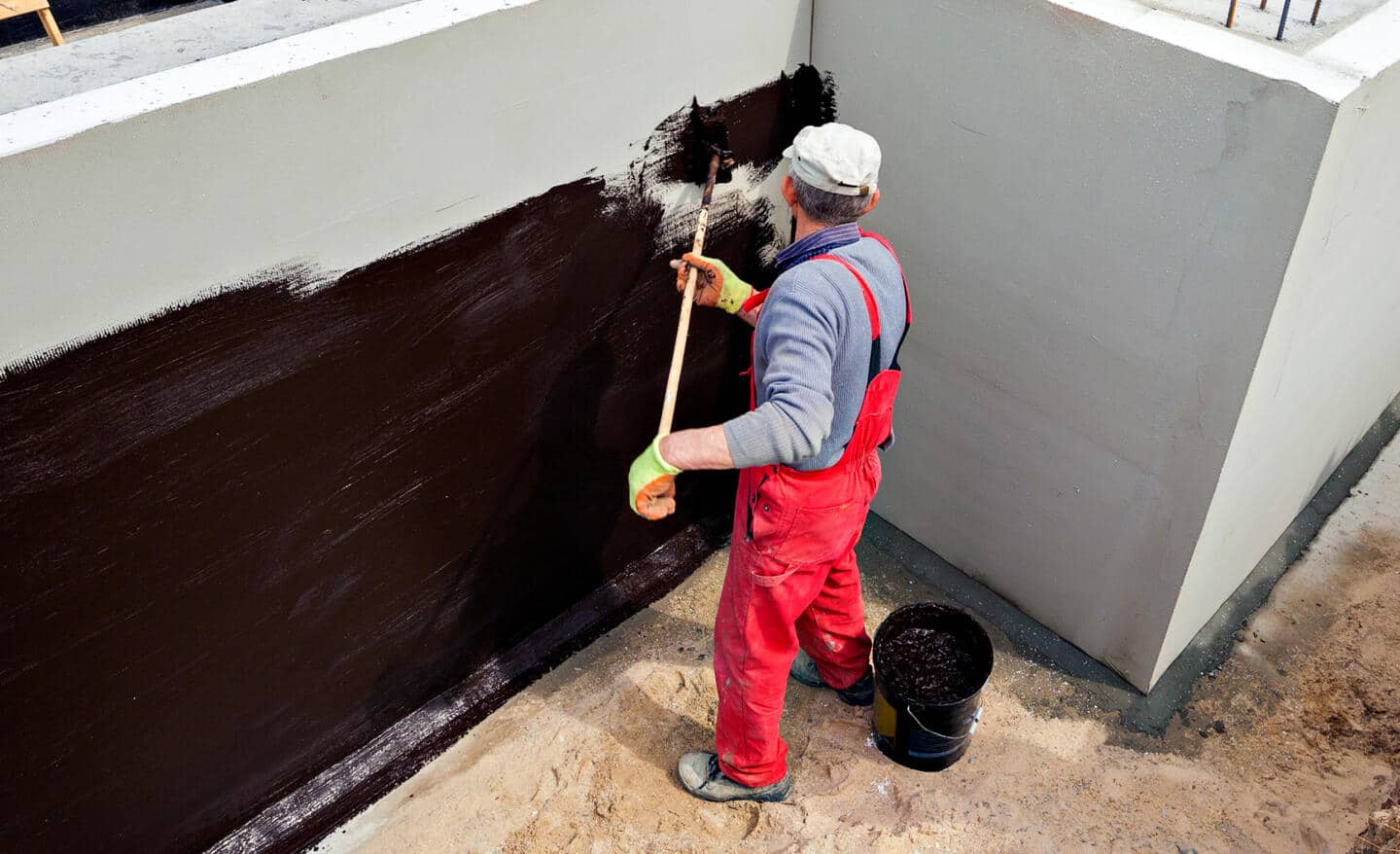Drainage & waterproofing company Omaha: What Sets the Best Apart
How Waterproofing Functions: A Thorough Appearance at Methods and Technologies
Waterproofing is crucial for shielding frameworks from moisture-related damage. It involves various methods and innovations that create barriers against water intrusion. Conventional approaches, such as compressed clay, exist together with modern-day innovations like liquid-applied membranes. Comprehending the subtleties of these approaches is crucial for efficient application. The performance of any kind of waterproofing remedy hinges not just on the strategies utilized yet also on ongoing maintenance and assessment. What are the vital elements that influence long-lasting efficiency?
Comprehending the Essentials of Waterproofing
Waterproofing is a crucial process that shields structures from water breach, which can lead to considerable damage over time. This technique includes the application of various products and techniques made to create a barrier against moisture. The main goal is to avoid water from passing through surfaces, which can create degeneration, mold and mildew growth, and architectural instability.Various aspects influence the selection of waterproofing approach, including the type of framework, its location, and ecological problems. Comprehending the physics of water motion and the residential properties of different materials is crucial in selecting a reliable waterproofing solution.Effective waterproofing not only safeguards buildings yet also enhances their longevity and honesty. Typically, it is incorporated into the design phase of building to assure detailed defense. As awareness of water-related problems grows, the relevance of recognizing waterproofing principles ends up being progressively clear to engineers, home builders, and building proprietors alike.
Traditional Waterproofing Methods
Traditional waterproofing approaches have actually been utilized for centuries, relying upon reliable strategies and products to safeguard frameworks from water damage. One of the oldest approaches entails using clay, which, when compressed, creates a natural barrier versus dampness. Additionally, asphalt, a sticky, black material acquired from petroleum, has been used for its water-resistant residential or commercial properties, commonly related to roofs and foundations.Another strategy includes the application of lime-based plasters, which supply a breathable layer that enables dampness to leave while preventing water ingress. Thatch roofing, a traditional technique still seen in some cultures, offers superb waterproofing because of its tightly loaded straw layers.Moreover, using stone and block has actually been popular, as these materials are inherently resistant to water when effectively mounted. Overall, typical waterproofing techniques emphasize the value of selecting proper materials and building and construction methods to improve longevity versus water intrusion.
Modern Waterproofing Technologies
Advancements in modern-day waterproofing modern technologies have changed the way frameworks are protected from water damages. Ingenious methods such as liquid-applied membranes and sophisticated sealants have actually improved the effectiveness and versatility of waterproofing remedies. These technologies permit smooth application, lowering the threat of leakages and ensuring thorough insurance coverage over complicated surfaces.Moreover, the assimilation of wise innovations, such as moisture sensors and automated surveillance systems, enables real-time assessment of waterproofing performance. This aggressive technique promotes timely maintenance and reduces lasting repair service costs.Additionally, advancements in spray-applied layers use quick application and excellent bond, adapting to different substrates while providing durable security. Strategies like polymer-modified systems further improve flexibility and toughness, making them ideal for varied atmospheres. On the whole, modern-day waterproofing innovations not only reduce water intrusion however additionally add to the durability and sustainability of structures, noting a substantial shift in the market.
Materials Made Use Of in Waterproofing
The effectiveness of waterproofing services heavily relies upon the products made use of in their application. Numerous materials are employed to develop barriers versus water ingress, each with unique residential properties suited for different settings. Typically made use of products include membrane layers, layers, and sealants.Liquid-applied membrane layers, frequently made from polyurethane or acrylic, create a smooth obstacle that adjusts to complex surfaces. Sheet membrane layers, commonly built from rubber or polycarbonate, offer toughness and are excellent for bigger locations. Furthermore, cementitious waterproofing materials, made up of cementitious substances, provide outstanding attachment and flexibility.Sealants made from silicone or polyurethane are important for joints and seams, making certain extensive defense. In addition, sophisticated materials, such as geo-composite membrane layers, combine numerous features, enhancing efficiency. Generally, the choice of waterproofing products is vital in attaining lasting and reliable water resistance, tailored to specific task demands and environmental conditions.
Common Applications of Waterproofing
Waterproofing plays a crucial function in numerous industries, making certain the long life and honesty of frameworks. Typical applications consist of residential solutions that safeguard homes, commercial framework that safeguards services, and industrial setups that require robust protection versus dampness. Recognizing these applications highlights the relevance of waterproofing in maintaining both safety and security and performance throughout various environments.
Residential Waterproofing Solutions
Several house owners encounter difficulties with moisture breach, making effective residential waterproofing options important. Numerous approaches exist to address this issue, consisting of inside and exterior waterproofing systems. Inside remedies commonly involve the application of sealants and coatings to cellar wall surfaces, which aid avoid water seepage. Outside techniques generally include the setup of water drainage systems and water-proof membranes that divert water far from the foundation.Additionally, property owners might take into consideration sump pumps to eliminate water build-up and dehumidifiers to manage humidity levels. Proper grading and making use of seamless gutters likewise play a vital function in taking care of water circulation around the home. By executing these techniques, house owners can greatly reduce the risk of water damage and mold growth, making certain a completely dry and risk-free living setting.

Business Framework Defense
Efficient waterproofing remedies play a crucial role in the protection of commercial framework. Landscape drainage Omaha. These techniques are necessary for protecting browse this site structures, auto parking frameworks, and bridges from water damages, which can jeopardize structural honesty and cause pricey fixings. Usual applications consist of the installment of membrane layers, finishings, and sealants that develop barriers versus dampness seepage. Areas such as cellars, roofs, and outside wall surfaces are commonly prioritized to Read Full Article ensure durability and resilience. Additionally, waterproofing systems can boost energy performance by protecting against water-related issues that might cause mold and mildew growth and wear and tear. By applying robust waterproofing steps, residential property owners can safeguard their financial investments and preserve operational efficiency, inevitably adding to the total sustainability of industrial centers
Industrial Applications Overview
While various sectors face unique obstacles, the requirement for reputable waterproofing services remains a constant in commercial applications. Industries such as manufacturing, building, and energy often come across settings where moisture direct exposure can endanger structural integrity and operational efficiency. In making centers, waterproofing is important for securing machinery and materials from water damage. In construction, it safeguards foundations and basements against groundwater infiltration. The energy field depends on waterproofing for the security of devices in hydroelectric plants and overseas frameworks. Furthermore, food processing sectors utilize waterproofing to ensure health and compliance with safety standards. On the whole, effective waterproofing remedies are important for enhancing resilience, safety and security, and performance across numerous commercial settings.
Upkeep and Long Life of Waterproofing Solutions
Waterproofing remedies are designed to provide long-lasting defense against dampness invasion, normal maintenance is crucial to ensure their performance and longevity. Regular inspections play a considerable duty in identifying prospective problems such as splits, peeling, or signs of water damages. Resolving these problems quickly can stop waterproofing foundation walls additional damage and costly repairs.Additionally, cleaning the surface of waterproofed locations aids get rid of dirt and particles that might endanger the honesty of the waterproofing obstacle. It's also recommended to reapply protective finishes or sealers as advised by manufacturers to maintain optimal performance. Environmental aspects, such as UV direct exposure and extreme weather condition conditions, can impact the life expectancy of waterproofing materials, making routine evaluation important
Often Asked Inquiries
Can Waterproofing Be Applied in Cold Weather?
The question of applying waterproofing in winter elevates concerns concerning attachment and treating. Many items might not carry out at their finest in low temperatures, demanding mindful option and factor to consider of particular guidelines for effective application.
For How Long Does Waterproofing Generally Last?
The duration of waterproofing performance differs based upon products and ecological elements. Typically, it can last from five to 10 years, however routine maintenance and inspections are vital to ensure peak performance and long life.
Is Do It Yourself Waterproofing Effective and Safe?
The effectiveness and safety of do it yourself waterproofing depend upon various factors, consisting of worldly quality and application strategy. While some individuals achieve satisfactory outcomes, others may experience issues that endanger long-lasting defense and architectural integrity.
What Are the Indicators of Failing Waterproofing?
Signs of falling short waterproofing consist of visible water discolorations, peeling paint, mold and mildew growth, stuffy odors, and wetness in wall surfaces or ceilings - Drainage & waterproofing company Omaha. These indicators recommend compromised obstacles, demanding prompt examination and potential removal to avoid further damages
Exactly how Do I Choose the Right Waterproofing Specialist?
